
TRANSPORTATION SAAS FOR BUSINESSES
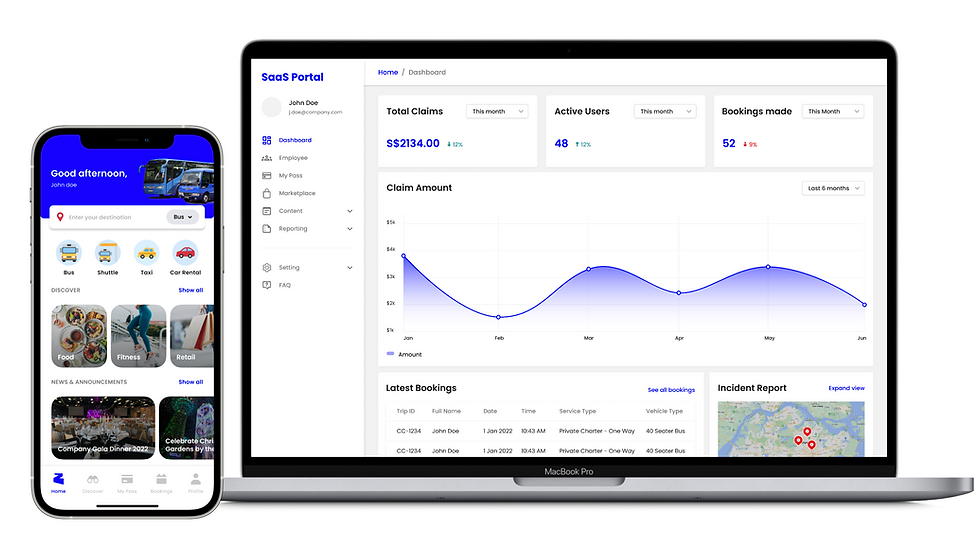
CONTEXT/INTRO
In a B2B business model, we aim to provide mobility solutions for our client companies in the form of a mobile app and a SaaS. With the app, we provide a booking platform to give companies access to our transport fleet. Through a SaaS, we allow the companies to keep track of the total bookings and amount spent via the web portal.
By integrating these services, we eliminate the need for manual transportation claims, as well as giving companies a one-stop solution for all their mobility needs.
In general, we want to target companies that requires these services, in scenarios such as but not limited to;
-
Inaccessible office/working locations
-
Ferrying large groups of people from point to point
-
Ferrying employees between offices
-
Welfare for employees (lunchtime & off work transport)
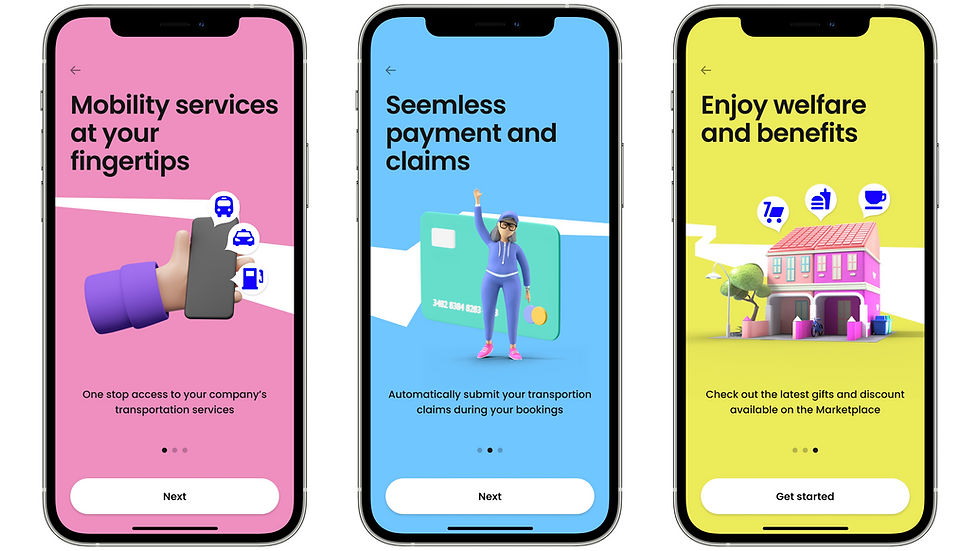
CORE OFFERING
Mobility
The product will primarily offer mobility services, allowing employees to book for rides to get around.
Seamless payment and claims
Claims are one of the key pain points for companies as it takes up man hours to process. The product ensures claim process is automated when users make a booking through the app.
Welfare and benefits
The system of "seamless payment and claims" can be extended to be used in welfare and benefits distribution. Companies can give flexi-benefits, allowing employees to make purchase from merchants on the app.
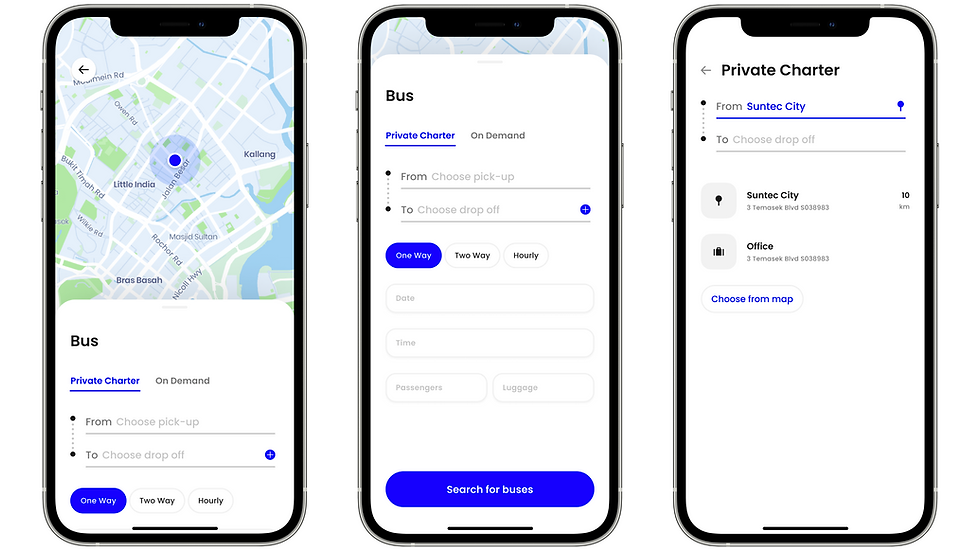
MOBILITY SERVICE (PRIVATE CHARTER)
Private charter is the booking of an entire bus, there is no restriction of the pick-up and drop off locations. Companies can use this when transporting large number of employees to work/for events etc.
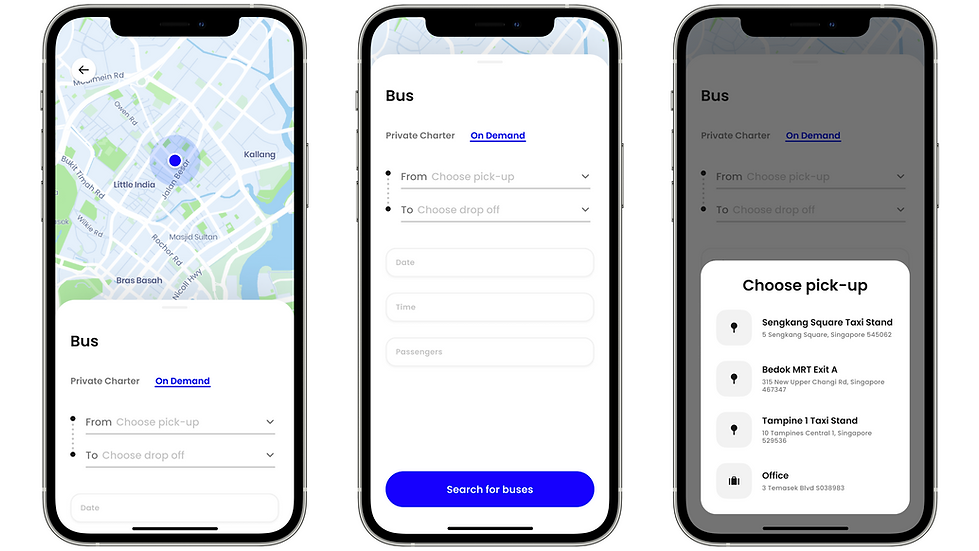
MOBILITY SERVICES (ON DEMAND)
Bus operates on a on-demand basis, going to designated bus stops to pick up users only when there is a booking made. This service fulfils the first-mile/last-mile of a journey.
Eg. Bus picks up employee from a MRT station and ferries him/her to the office, vice versa.
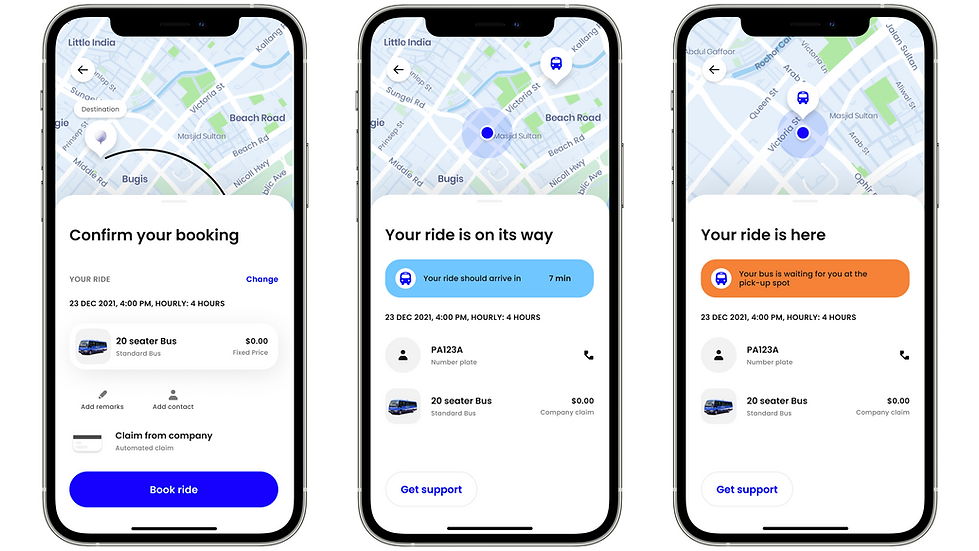
BOOKING FLOW
Real time location of vehicles and contact number of the driver to give users visibility regarding their booking status.
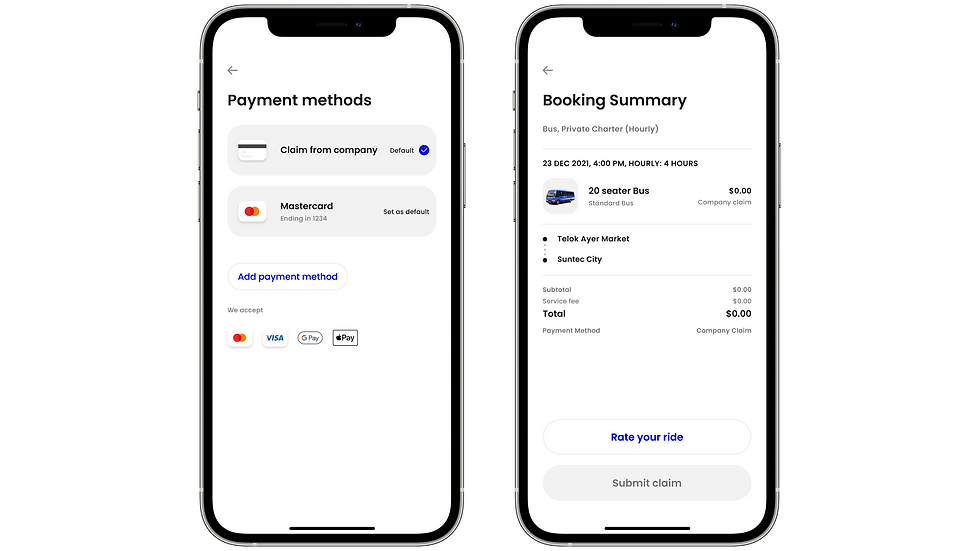
TRANSPORTATION CLAIMS
Depending on the company's preference, claims from transportation expenses incurred from the bookings can be processed in 2 ways;
-
"Claim from company" as a payment method. Employees are free to make bookings on the app, which would then be billed to the company at the end of the month.
-
"Submit claim" where employees pay for the booking first, before submitting their claim via the app. HR will approve the claim and reimburse the amount.
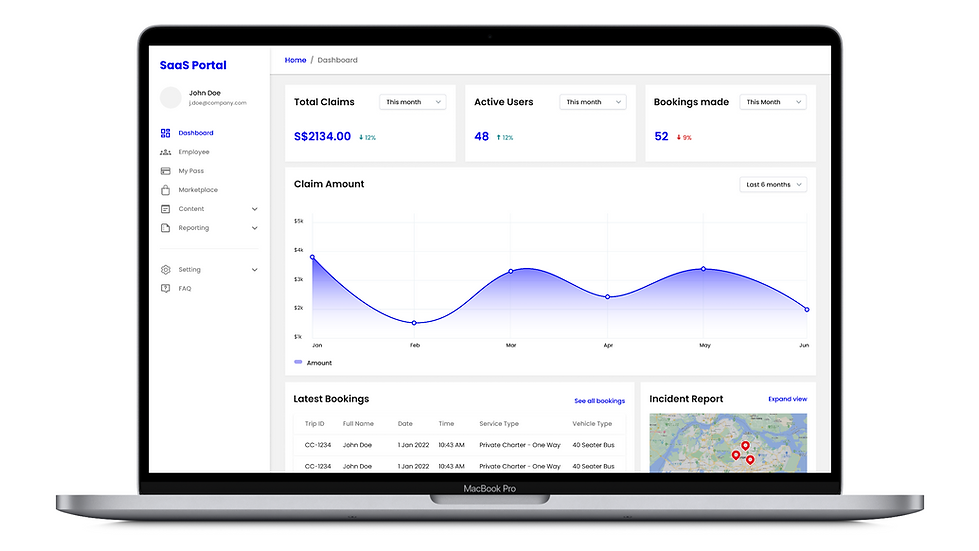
WEB PORTAL
The bookings made and claims submitted by employees can be accessed and managed using a web portal by the HR.
The dashboard on the homepage can give insights to the company regarding their monthly spend and usage. It also helps them keep a record of the bookings made by their employees.
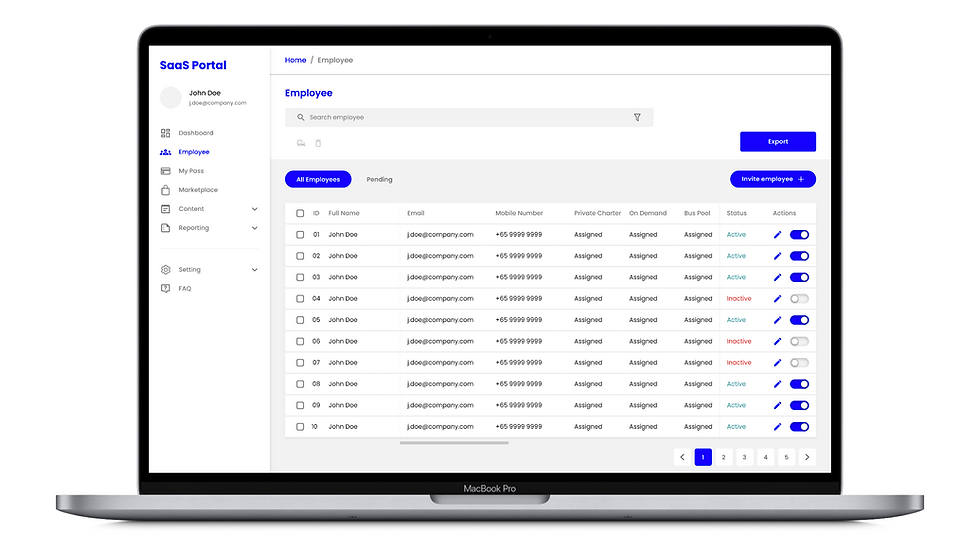
EMPLOYEE'S LIST
For HR to manage the employees in the companies book. Invite and accept new employees and onboard them into the product.
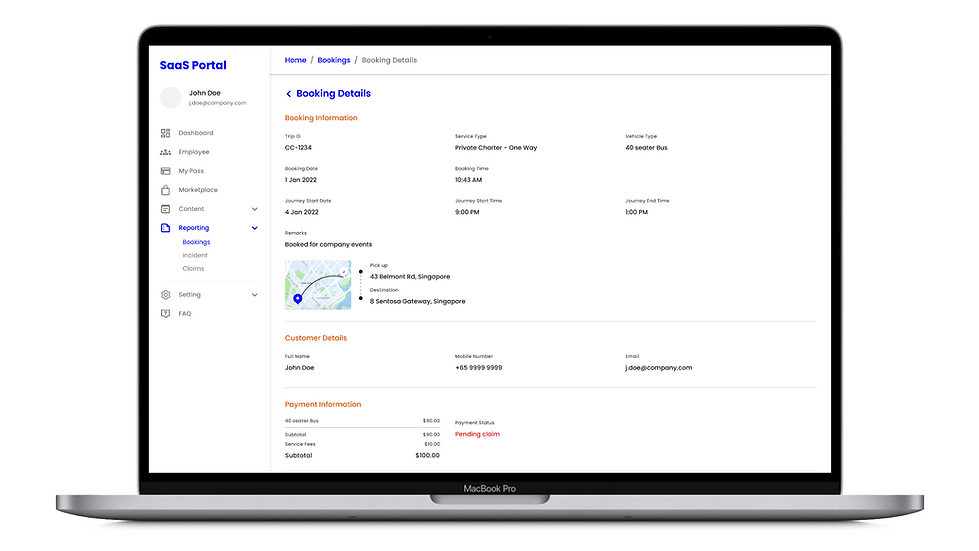
REPORTING
Booking details are recorded on the portal and can be accessed by the company for reporting purposes.
FUTURE FEATURES
Taxi services
Incorporating taxi services will be of the highest priority for a mobility-centric product. It will greatly expand the app's use case and enhances the importance of "seamless payments and claims" feature.
Marketplace
Expanding beyond mobility as a service, we can leverage on our existing "payment/claim" system to provide eCommerce for our users. This enables companies to easily implement flexi-benefits for their employees.